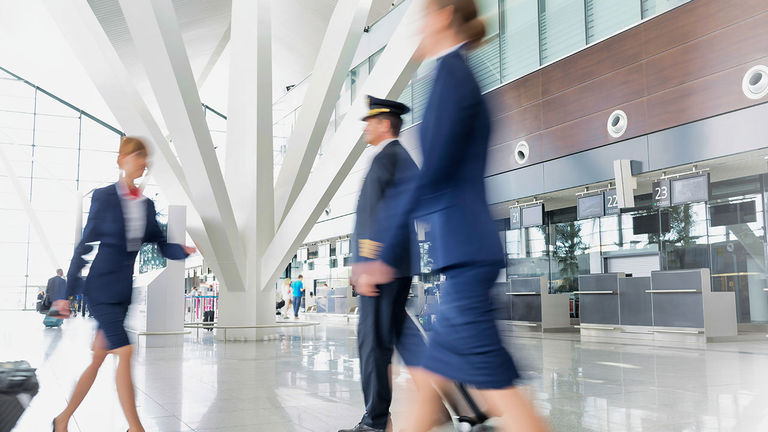There’s no shame in asking for driving directions — especially if you’re not really sure where you’re going. So, in hopes of better understanding the road ahead next year when it comes to travel, we asked for some help from several tourism industry pros with longtime expertise in the hotel, airline, tour operator and cruise sectors.
And while the pandemic’s far-reaching impact on travel certainly came up frequently, it seems clear that what was true prior to and throughout the COVID-19 crisis will not necessarily remain relevant in 2023.
Travel Trend 1: Vacation Spend Is Not Slowing for 2023
“It’s almost like travel went from a discretionary spend to an essential spend for a lot of people,” said Jackie Friedman, president of Nexion Travel Group, explaining that total vacation spend has been up substantially this year for Nexion advisors, and she expects that to continue in 2023. “I think people are now realizing the value of experiences. You take something away from people, and they realize how important it is.”
 Greece and Italy are already two of the hottest destinations for 2023.
Greece and Italy are already two of the hottest destinations for 2023.
Credit: 2022 Funny Studio/stock.adobe.comDavid Kolner, Virtuoso’s executive vice president, said 2022 has been a record-setting sales year for most of the network’s member agencies, and it’s collecting data that points to an even better 2023.
“We are estimating that we will be up about 7% over 2019,” Kolner said of Virtuoso member agencies’ projected revenue in 2022.
Virtuoso also compared how much had been sold for one to two years out (as of October) in both 2022 and 2019. The results are significant.
“What we found was a 43% increase for travel one to two years out from 2022 versus [what had been booked] at the same point in 2019,” he said.
There’s very much this mentality of ‘I deserve this. I haven’t done it, and I want to do it, and I’m not going to wait. I’m going to go now.'
According to Misty Belles, Virtuoso’s vice president of global public relations, the network’s research indicates high-net-worth travelers accumulated a great deal of wealth during the pandemic, and they are not worried about spending it.
“There’s very much this mentality of ‘I deserve this. I haven’t done it, and I want to do it, and I’m not going to wait. I’m going to go now,’” Belles explained. “Clients are taking more trips, they are staying longer and they are going bigger.”
Travel Trend 2: In 2023, Consumers Will Book Trips Further Out
Jaclyn Leibl-Cote, president and chief brand officer for Collette, said the tour operator has seen a noticeable change in when consumers are booking vacations.
“Earlier this year, they might have been a little closer in, but we are definitely seeing things stabilize a bit,” she said. “Booking patterns for 2023 are looking a lot more like they did in 2019. And I think some of that is evidence of far more confident consumers.”
Booking patterns for 2023 are looking a lot more like they did in 2019. And I think some of that is evidence of far more confident consumers.
Nexion’s Friedman agreed that more travelers are feeling better about pulling the trigger on trips much further out.
“We’re definitely seeing folks comfortable in booking out into the future, particularly to some of the more far-flung destinations they may not have been going to before,” she said.
According to an October survey conducted by Morning Consult on behalf of the American Hotel & Lodging Association (AHLA), 61% of the 4,000 Americans polled said they are likely to take more vacations in 2023 than they did this year. And both Friedman and Leibl-Cote said they are seeing consumers book longer trips.
 Now is the best time to avoid crowds in Asia.
Now is the best time to avoid crowds in Asia.
Credit: 2022 tawatchai1990/stock.adobe.com“I think because people were home for so long — and flights became more expensive with fuel costs and less lift overall — they decided to optimize the time in which they were going,” Leibl-Cote said. “Where maybe they were taking a 10-day trip before, they’re now doing a 14-day trip. And I think part of that is clients just looked at time differently pre-pandemic than they do now.”
Travel Trend 3: Airlines Have Learned Some Lessons, But Expect Some Turbulence for 2023
U.S. passenger airlines employed nearly 494,000 full- and part-time workers at the end of September this year, a figure that’s roughly 3.6% higher than the total number of employees working for domestic passenger airlines in September 2019, according to data collected by the U.S. Department of Transportation (DOT).
 According to DOT, U.S. airlines’ labor force now exceeds 2019 figures.
According to DOT, U.S. airlines’ labor force now exceeds 2019 figures.
Credit: 2022 moodboard/stock.adobe.comAnd all told, U.S. passenger airlines hired approximately 38,000 employees in the first nine months of this year, according to DOT statistics released Nov. 10.
“We’ll still see some challenges,” said Peter Vlitas, executive vice president of Internova Travel Group, who noted that airlines have done a good job of hiring people back while also better managing their capacity in recent months.
“But operationally, I do not think we are going to have as many issues with the airlines,” Vlitas said. “Airlines have become more humble because of the pandemic. It opened their eyes to a lot of service disruptions, and I don’t think any of them want to repeat the problems we had in the last two years.”
Travel Trend 4: Labor Is Still a Concern at Airports
Even so, Vlitas is not convinced flight-related frustrations are entirely behind us.
The concern is: Will airports get it right? If we’re going to see disruption, the disruption will happen because the other parts of the supply chain are not meeting up with capacity.
“Airlines will get it right because they saw what went wrong,” he said. “The concern is: Will airports get it right? If we’re going to see disruption, the disruption will happen because the other parts of the supply chain are not meeting up with capacity. With all this added flow, with all these people flying, it’s getting jammed up at TSA and in customs and immigration. Those are the pain points in the journey.”
Travel Trend 5: Airfare Is Not Getting Cheaper This Year
Internova’s Vlitas also noted that while he thinks airfares have probably peaked, travelers should not expect much pricing relief next year.
Once travel advisors find their customers an applicable fare, they really need to get them to buy the ticket to protect them from the increase that will inevitably happen.
“Procrastinators should be prepared to pay a premium because of demand,” he said. “Even if an advisor looks on a seat map and sees a lot of empty seats, don’t think, ‘I’ll issue the ticket in a few days,’ or ‘Let’s see if the fare is going to go down.’ In this environment, in 2023, no fare is going down. If anything, an airline might figure out that a flight may sell out because they have all this data, and they are going to flip and change the price anyway. Once travel advisors find their customers an applicable fare, they really need to get them to buy the ticket to protect them from the increase that will inevitably happen.”
Travel Trend 6: People Are Paying for Sustainable Choices in 2023 and Beyond
Virtuoso polled about 300 affluent travelers in May and found that 80% of respondents feel that the pandemic made them want to travel more responsibly in the future. And 75% of those polled say they are willing to pay more to travel responsibly if they know how their money is being used.
“Our role is to make sustainability a choice in travel planning,” Virtuoso’s Kolner said. “And it’s clearly not about it being cheaper. That’s because they recognize the impact of sustainability and recognize the importance of how their travel impacts the planet.”
Jeff Sirota, a hospitality personality for high-end hotel and destination management company marketing firm J.MAK Hospitality, said travelers are more interested in tourism products that allow them to leave places in better shape after they have visited.
Our role is to make sustainability a choice in travel planning.
“It makes you as a guest feel good that, ‘Hey, I’m not just spending money to pamper myself, but I’m actually doing something that’s giving back to a community where I’m staying,’” Sirota said. “I think people feel better doing something like that when they travel versus, ‘Okay, cool, I’m just funding this mega-corporation and giving them money.’ Of course, not everybody’s thinking that way, but I think more and more, these are conversations that are being had.”
Travel Trend 7: There Is More to Do in the Inclusivity Space, Especially for LGBTQ+ Travelers
Booking.com commissioned a survey of more than 500 LGBTQ+ U.S. travelers in April and May this year and found that 72% of those polled have experienced less-than-welcoming or uncomfortable experiences when traveling.
And 50% of those respondents said they have encountered discrimination while traveling — either through stereotyping, being stared or laughed at, or being subjected to verbal abuse by other travelers or locals.
Tyronne Stoudemire — senior vice president of global diversity, equity and inclusion for Hyatt Hotels — said he believes the tourism industry has made some real progress on the issue of inclusivity, but there’s still work to be done.
We have come so far, but there’s still so far to go.
“We have come so far, but there’s still so far to go,” Stoudemire said. “But what I do see in the industry is that people really are asking themselves the questions: ‘What can I do? What should we do differently? How do we show up? How do we be more inclusive?’ While we are making progress, it is not fast enough.”
Stoudemire noted that Hyatt has enacted a range of initiatives aimed at doubling representation within the company by women and people of color in the U.S. by 2025. And Hyatt is also taking steps at its properties to make sure guests feel cared for and safe, according to Stoudemire, who pointed to improvements aimed specifically at LGBTQ+ travelers, such as training for employees on pronouns, restrooms for the transgender community and creating spaces in spas for “all people to be comfortable and to be their best.”
 LGBTQ+ travelers still experience discrimination while traveling.
LGBTQ+ travelers still experience discrimination while traveling.
Credit: 2022 EdNurg/stock.adobe.com“We’re leaning on our [LGBTQ+] colleagues to help provide us with insights, best practices and a better understanding about some of the barriers that may stop our gay community from staying with us,” Stoudemire said.
Travel Trend 8: Hotels Have Less Issues With Labor for 2023
The AHLA surveyed 200 hoteliers in September of this year and found that 87% of those properties are experiencing staffing shortages and 36% are navigating severe staffing challenges.
While not especially rosy, those September numbers are an improvement from a survey conducted by the AHLA in May this year that found 97% of the hotels polled were short staffed — 49% of them severely.
We’ve had great success in hiring over the last six months, and for the most part, we are back and staffed.
Dan Surette, chief sales officer at Omni Hotels & Resorts, which manages more than 50 North American properties, said staffing up was a substantial challenge earlier this year, and demand was building faster than they could hire, which hampered many services. But Surette said Omni doesn’t see labor as an issue in 2023.
“We’ve had great success in hiring over the last six months, and for the most part, we are back and staffed,” Surette said. “We’ve got some open positions, but our programming for the most part is back. We’re offering and providing daily housekeeping service. Most of our food and beverage venues are up and running. We’re not having any issues on capping availability or not providing traditional, daily full-service hotel services. We’re excited about where we are.”
Travel Trend 9: Hotels Are Saying Hello to Groups This Year
Omni’s Surette said leisure occupancies at the hotelier’s properties, like so many others in the industry this year, have been outperforming 2019 significantly, but he anticipates there will be a shift in the type of traveler staying at the company’s properties next year.
We’re expecting leisure demand to slow a little bit.
“We’re expecting leisure demand to slow a little bit,” he said. “There are more options internationally. It’s group travel that is coming back now and continues to grow. Right now, we’re at 65% of our group business in 2019, and we’re anticipating that will get to probably 85%, maybe close to 90%, next year, but to not quite hit 2019 levels in 2023.”
Surette indicated that with a slight downtick in leisure sales, due to increased global competition, along with continued growth from the groups and corporate business markets, Omni’s total revenue will likely be better than 2022, but may fall short of the hospitality company’s 2019 figures.
“I think in terms of average rates, we’re probably there, but it’s occupancy that’s still a few points off,” he said. “I would say we’ll be within 10% of 2019, overall, which to us feels right. Our industry is still coming back.”
Travel Trend 10: International Hotels Will Still Charge High Room Rates for 2023
The average daily room rate (ADR) at hotels across the U.S. was $158 in September this year, a jump of nearly 16% over the same month in 2019, according to data compiled by hospitality analytics firm STR.
Virtuoso’s Kolner said, meanwhile, that the network is forecasting domestic ADR for the fourth quarter of 2022 to be up as much as 25% over the same period in 2019.
“And it’s even higher for international ADRs,” he said. “We expect non-U.S. ADRs will be up 46% compared to 2019 [in Q4 this year].”
We expect non-U.S. ADRs will be up 46% compared to 2019 [in Q4 this year].
Kolner was quick to note that Virtuoso members are not seeing those soaring room rates negatively impact their business, though.
“I don’t think there’s a single member agency that would say it has seen any indication of demand slowing down at all while the pricing increases,” he explained, noting that he doesn’t expect room rates to drop next year. “I don’t think anyone’s going to have to lower their prices, particularly in the high-end market. There is still so much demand for travel.”
J.MAK’s Sirota did note, however, that some of the domestic hotel properties his firm represents may reconsider their room rates in 2023 because U.S. travelers will have so many more international travel options next year.
“I think that’s a decision a lot of these [U.S.] hotels are going to have to make: Do we lower rates to fill our hotels or do we keep it at this higher level and not necessarily go to 100% occupancy?” Sirota said.
Travel Trend 11: Ultra-Luxe Cruising Is Hot, Hot, Hot This Year
Ann Chamberlin, the U.S. vice president of sales for Scenic and Emerald Cruises, expects total sales to jump 30% in 2023 when compared with 2019, due in no small part to sailings onboard her company’s ultra-luxury Eclipse and Eclipse II vessels.
 Scenic’s Eclipse expedition ship has been popular with travel advisors.
Scenic’s Eclipse expedition ship has been popular with travel advisors.
Credit: 2022 Scenic/Richard Brierley“What travel advisors have been telling me is that their clients want to be booked on these really high-ticket items right now,” Chamberlin said. “We’ve come through the pandemic, and people feel that it’s their time, and they’re going to book what they want — and we’re seeing it in the numbers with the higher-end categories definitely booking first.”
We’ve come through the pandemic, and people feel that it’s their time, and they’re going to book what they want — and we’re seeing it in the numbers with the higher-end categories definitely booking first.
Set to debut in April next year, the Eclipse II will have nine dining venues, a 5,000-square-foot spa, two helicopters and a submarine. Its sister ship, which has been sailing in 2022, has essentially the same amenities, but the spa is a little smaller at 3,500 square feet, according to Chamberlin. Destinations for the vessels in 2023 include the North and South poles, the South Pacific, Australia and the Caribbean.
One element of the ultra-luxury yachting category that Chamberlin said really appeals to many consumers is the chance to explore destinations far more thoroughly, thanks to intimate access provided in part by new technology.
“We use dynamic positioning; we don’t use an anchor,” Chamberlin said. “And what that means is when we come into a really fragile area — a nature preserve, for example — we can go in further without disturbing the sea floor. And the stabilizers are only 20% less than the size of Royal Caribbean’s largest ship, so you’ve got massive stabilizers on this beautiful yacht.”
Travel Trend 12: Europe Is Still a Popular Destination for 2023
Just about all the experts we spoke with mentioned that interest in Europe for next year is already soaring, and destinations such as Italy and Greece are especially popular. J.MAK’s Sirota noted that one of the Italian properties he represents — the J.K. Capri on the Amalfi Coast — is already essentially sold out for next summer.
Especially when you talk about big holidays — Fourth of July, Memorial Day, Labor Day, those busier periods when U.S. travelers head over — that’s starting to fill up already.
He was quick to note how that example is more of an exception than a rule, but he did suggest that folks interested in traveling to extremely popular European destinations over peak periods next year should start thinking now about getting something on the books.
“Especially when you talk about big holidays — Fourth of July, Memorial Day, Labor Day, those busier periods when U.S. travelers head over — that’s starting to fill up already,” Sirota said. “If you’re talking about those more popular destinations at those times, I would say people need to get on it now.”
Travel Trend 13: Asia Is Beginning to Stir This Year
While that same booking urgency doesn’t appear to be necessary in Asia, Australia or New Zealand, those destinations were also mentioned frequently as locations where travel sellers are seeing an increase in inquiries.
One key thing that’s going to impact people’s travel to Southeast and East Asia next year is the return of Chinese travelers when that country finally opens, and that’s probably going to happen in the first quarter of next year.
Ambrose Bittner, the owner of Seattle-based tour operator Red Lantern Journeys, which specializes in FIT tours across Asia, said he’s been booking a great deal of Japan, Thailand, Vietnam and Cambodia for 2023. But he encouraged travelers thinking about Southeast Asia next year to seriously consider traveling sometime in January or February, which is still the region’s high season.
“One key thing that’s going to impact people’s travel to Southeast and East Asia next year is the return of Chinese travelers when that country finally opens, and that’s probably going to happen in the first quarter of next year,” Bittner explained. “Because of the lack of Chinese tourists in Southeast Asia now, you don’t have anywhere near the same crowds. But when the Chinese return, it’ll mean all the iconic places will be more crowded — beaches, temples, palaces and markets.”